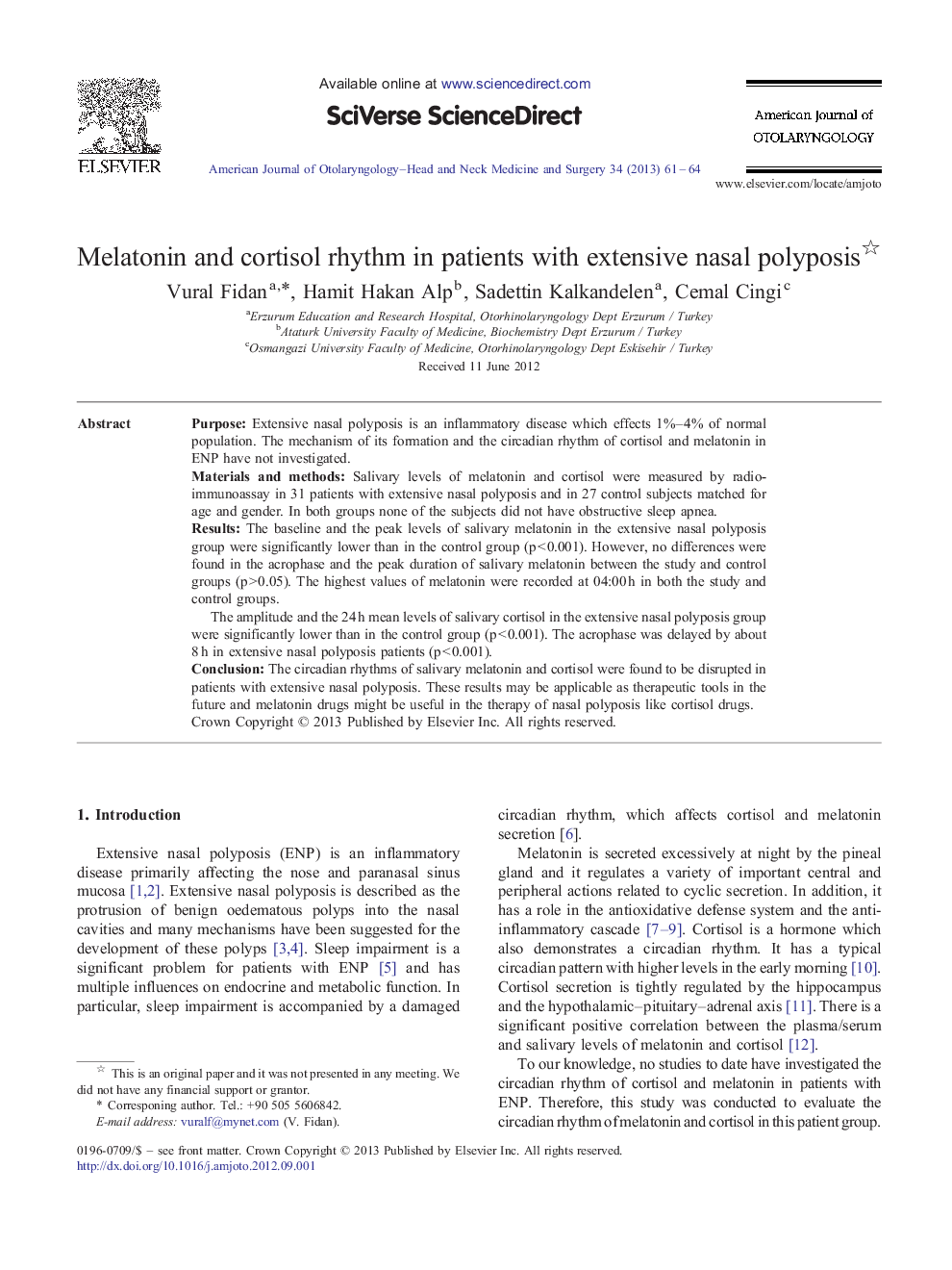| Article ID | Journal | Published Year | Pages | File Type |
|---|---|---|---|---|
| 4103916 | American Journal of Otolaryngology | 2013 | 4 Pages |
PurposeExtensive nasal polyposis is an inflammatory disease which effects 1%–4% of normal population. The mechanism of its formation and the circadian rhythm of cortisol and melatonin in ENP have not investigated.Materials and methodsSalivary levels of melatonin and cortisol were measured by radioimmunoassay in 31 patients with extensive nasal polyposis and in 27 control subjects matched for age and gender. In both groups none of the subjects did not have obstructive sleep apnea.ResultsThe baseline and the peak levels of salivary melatonin in the extensive nasal polyposis group were significantly lower than in the control group (p < 0.001). However, no differences were found in the acrophase and the peak duration of salivary melatonin between the study and control groups (p > 0.05). The highest values of melatonin were recorded at 04:00 h in both the study and control groups.The amplitude and the 24 h mean levels of salivary cortisol in the extensive nasal polyposis group were significantly lower than in the control group (p < 0.001). The acrophase was delayed by about 8 h in extensive nasal polyposis patients (p < 0.001).ConclusionThe circadian rhythms of salivary melatonin and cortisol were found to be disrupted in patients with extensive nasal polyposis. These results may be applicable as therapeutic tools in the future and melatonin drugs might be useful in the therapy of nasal polyposis like cortisol drugs.
